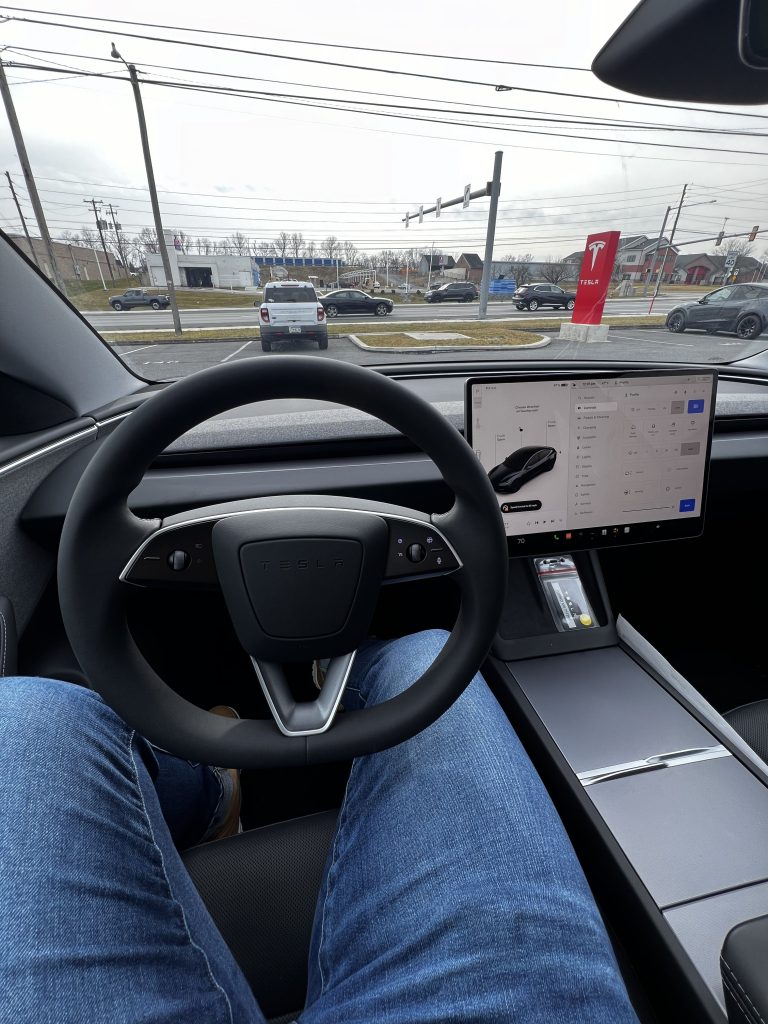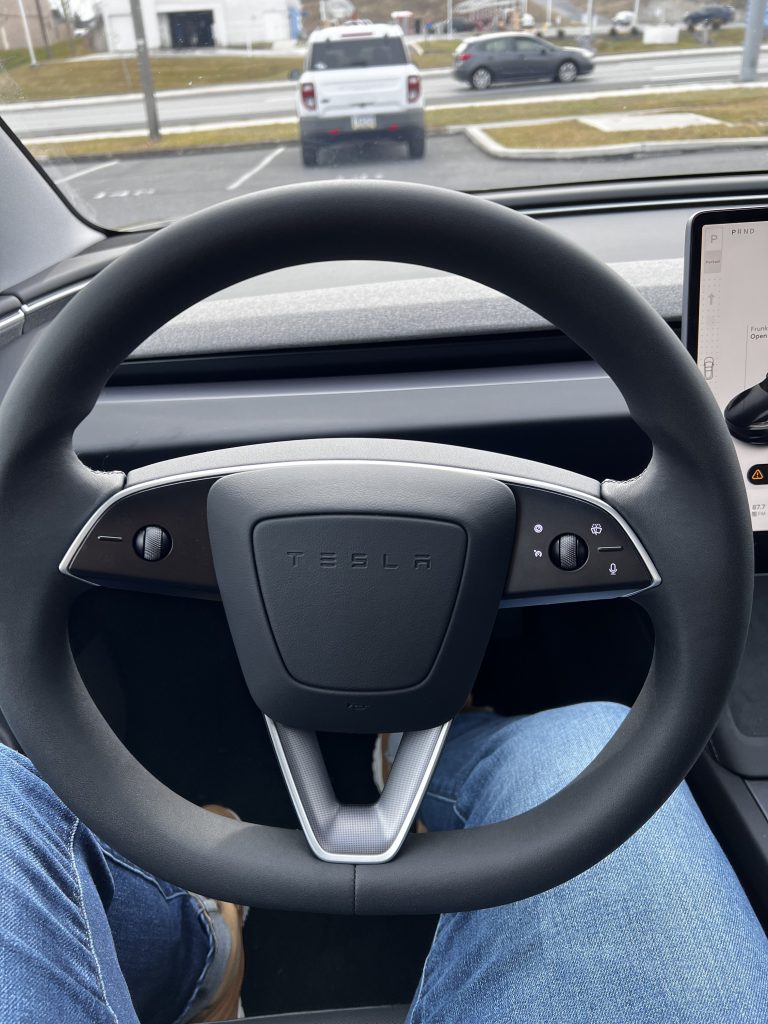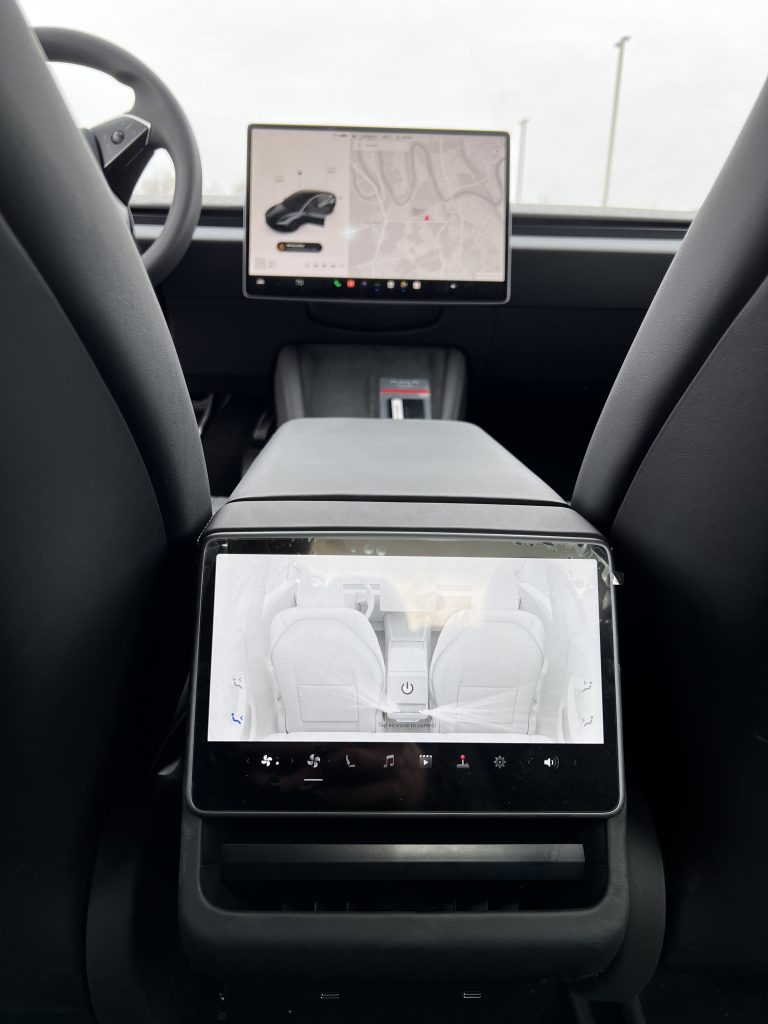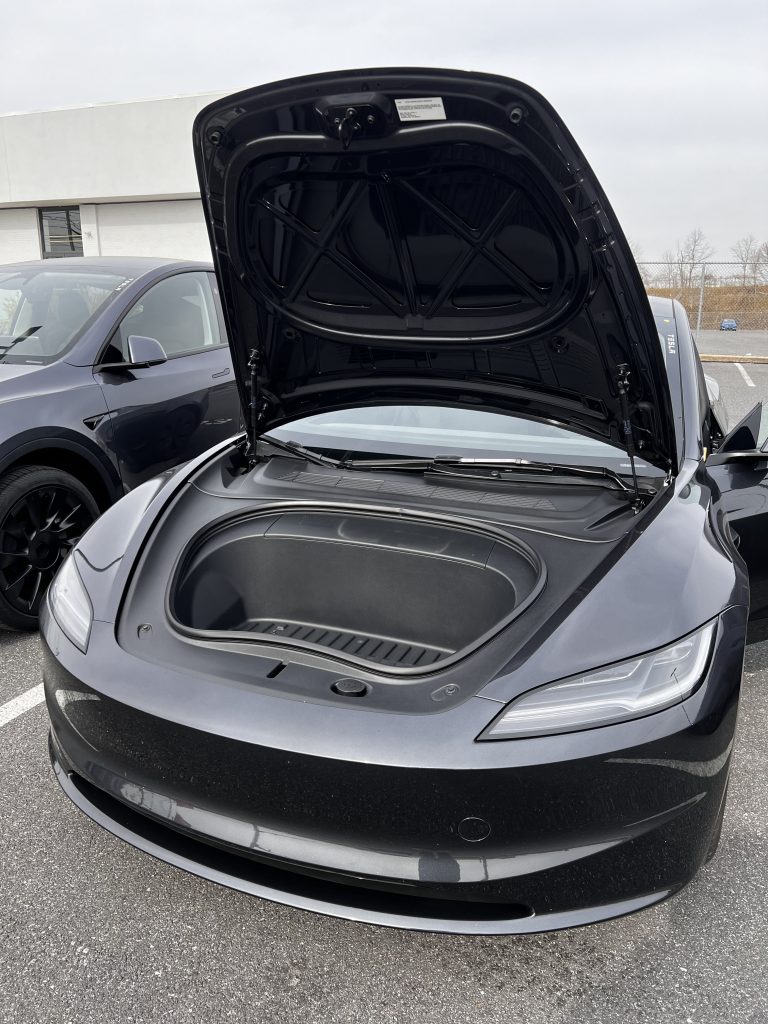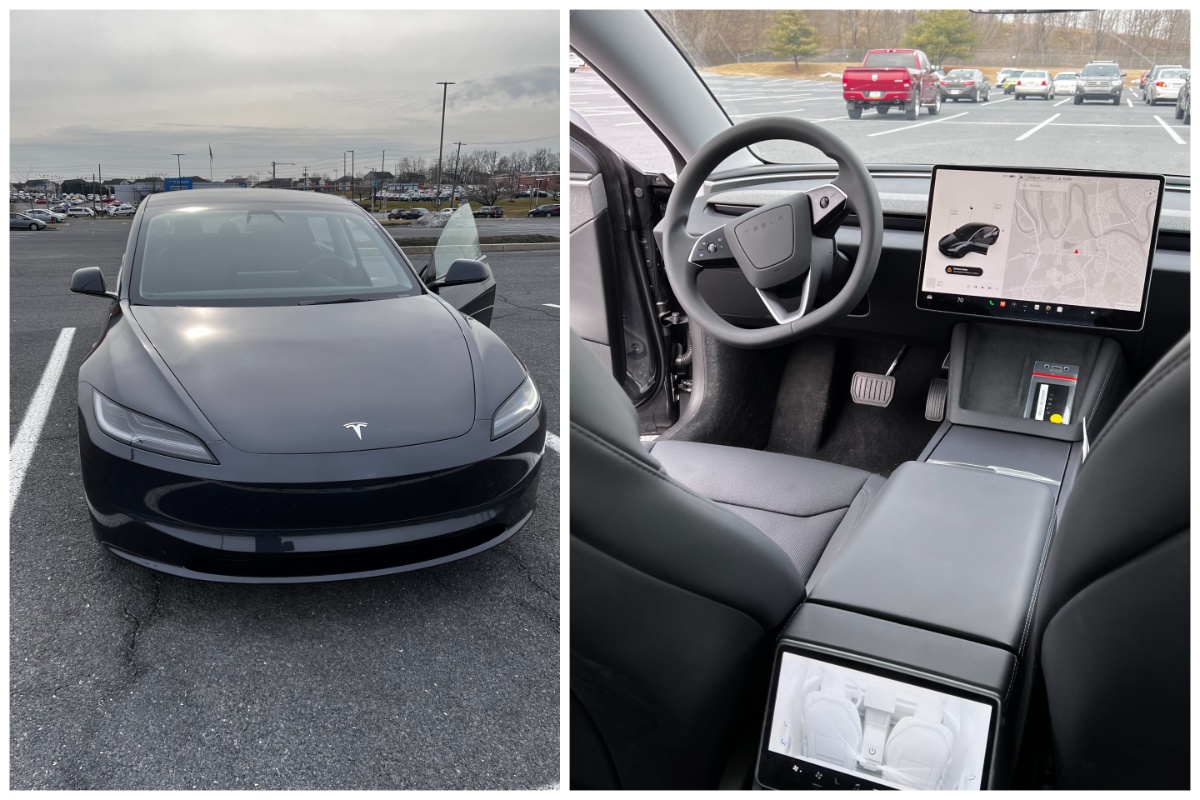
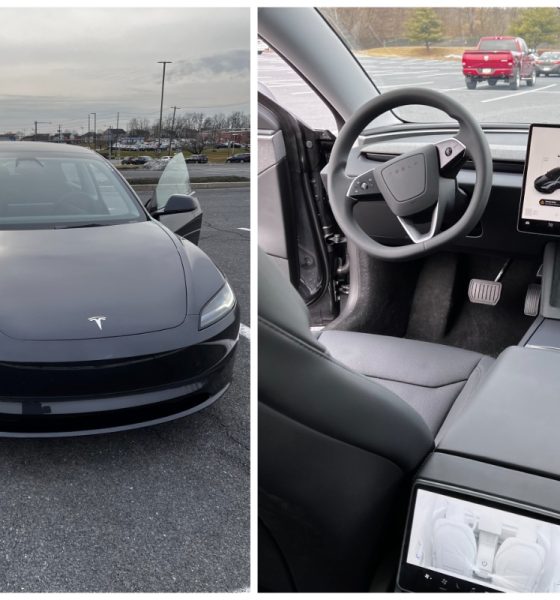
News
I drove the new Tesla Model 3, here’s what got better
The new Tesla Model 3 is now available for test drives at several Tesla Showrooms. It was available just an hour from me, so I decided to drive up and give it a spin.
The first Tesla I ever drove was a Model 3 back in 2019 when I first started writing for Teslarati. Since then, I have had the chance to drive the four models in its lineup. The Cybertruck is not yet available near me, but when it is, I’ll be sure to take that for a spin, too.
My expectations going into the drive were pretty standard. I knew that Tesla had changed a lot about the car, and I really do love the new look of the Model 3; it’s sporty and sleek, and just a better aesthetic than what was previously offered. However, looks only go so far, and what I was really interested in was the true performance and interior changes that the new Model 3 equipped.
It definitely was not what I expected, and I was pleasantly surprised by some features but underwhelmed by others.
First Thoughts and Initial Impressions
When I arrived, I was pleasantly surprised by the look. I really do like the new front end of the car. It looks sporty and tough and clean, but also it just seems more appealing. I think the legacy Model 3 is a good design, but it was just too generic when comparing it to this option.

The new headlight design is sleek and slim and, from the outside, you truly do think you’re getting into something that is super luxurious. I also loved this color in particular. I usually like white cars, but this Stealth Grey was super clean.
Getting In
The new interior is similar to the legacy Model 3 interior, but there are a few noticeable changes. I will say I don’t think I’d ever want to own a car without stalks. I totally understand the removal of things in preparation for Full Self-Driving, but we’re pretty far off from having a fully autonomous vehicle, so I think there should be an option for people to have traditional stalks.
Without them, and without a lot of other things, the interior of this car just feels empty. I am still a firm believer in having some more physical buttons and knobs because things are easier to adjust and are more accessible that way. In my car, I am able to change the climate, adjust which vents are active, and control other features, like my drive mode, with the touch of a button or the turn of a knob. It takes less than five seconds to do so.
In the Model 3, it takes a few touches on the center screen to adjust everything from the mirrors to the steering wheel. To me, it’s too much of a process to perform these simple tasks, and the lack of things to look at is something I personally do not enjoy. I do understand the appeal, though.
Tesla moved from haptics to physical buttons on this new steering wheel, which was an interesting touch. It only took me about three or four turns, or roughly ten minutes, to realize I needed to stop reaching for stalks. I feel like the buttons are super convenient, but there were times I would push the edges or corners, and the signal would not come on.
You have to push the center of the signal button for it to activate, and it also holds that hand captive on that portion of the wheel.
The high-beam button is also where things get dicey. During my drive, someone was attempting to merge over into my lane in front of me. I flashed my lights at him to get over, which he did. But it was more difficult than just flicking a stalk a couple of times.
I totally realize that these are pretty tedious complaints, but I do believe there are some people who would see this as such an inconvenience that it would stop them from buying a car.
A lot of things I liked, including the ventilated seats, the wireless charger, the center console, and the cup holder covers are a sleek touch. Everything felt very high-quality. There was not very much creaking or movement from these parts, which can sometimes be cheap and seem like an inferior quality. This was not the case in this car, I was really impressed with everything.
Driving
It is fun to drive an electric car. Every EV I have ever had the opportunity to drive has been more fun than a gas version that is similar. The Model 3 is definitely an improvement from its legacy build, and I was impressed by the suspension feel, the cabin noise reduction, and the overall ride quality in general.
I started on a four-lane highway that featured stoplights to test how it felt in traffic. It was as you’d expect. Where I really wanted to test it was on backroads in Pennsylvania, which there are plenty of. This is where the most fun driving is done, at least in my opinion.
I took it on some windy and tight backroads and it hugged the corners super well. The suspension kept the car feeling sporty and capable during some of the curves. I tried to push the car as much as I could responsibly, and it passed with flying colors. I will say there are only a handful of vehicles that have given be this amount of confidence when taking turns with some speed, one of them being the Ford Mustang Mach-E.
Even the updated Model 3 outperformed the Mustang Mach-E, which was one of the most fun driving experiences I have had in recent memory.
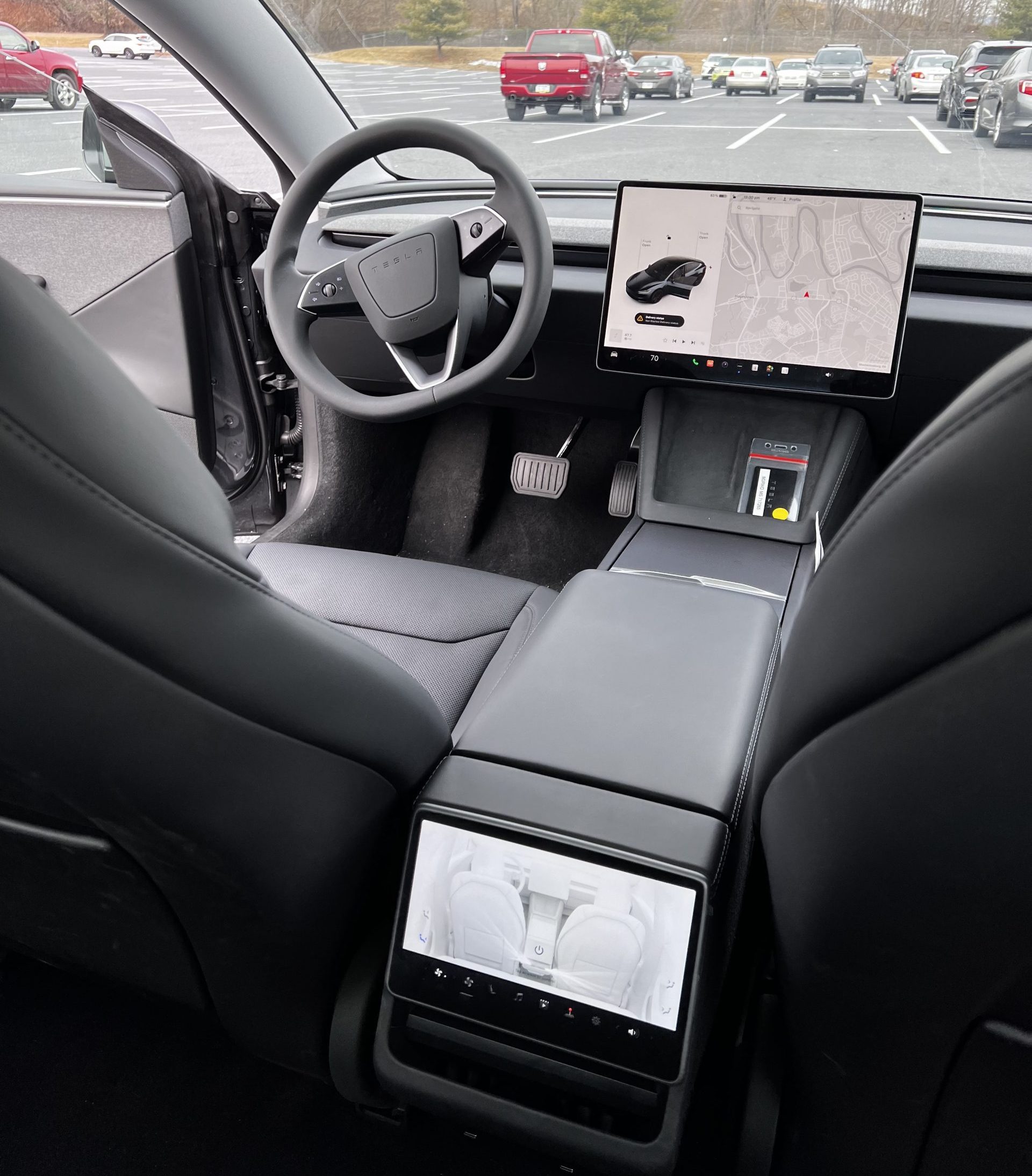
I had a Rear-Wheel-Drive version of this car, and it was missing that truly face-melting instant torque that I have had in other cars, especially the Long Range All-Wheel-Drive and Performance configurations that I’ve driven in the past.
For me, I don’t drive super fast. I was in a couple of car accidents in high school as a passenger, and they taught me to be more responsible on the road. I know when I have to drive with some aggressiveness and with some speed, and it is not often. However, this configuration was just not enough pep for me. If I were to make an order, I’d be going a step up.
Other Thoughts
A couple of things worth mentioning are the rear legroom, the rear touchscreen, trunk and frunk space, and the road noise.
Rear Legroom
I am 5′ 8″, and I did not move the driver’s throne when I decided to hop in the backseat to see how much room there was.
There wasn’t much, and I don’t know if I could see myself being strong enough or patient enough to make it more than a few hours with such little space to move.
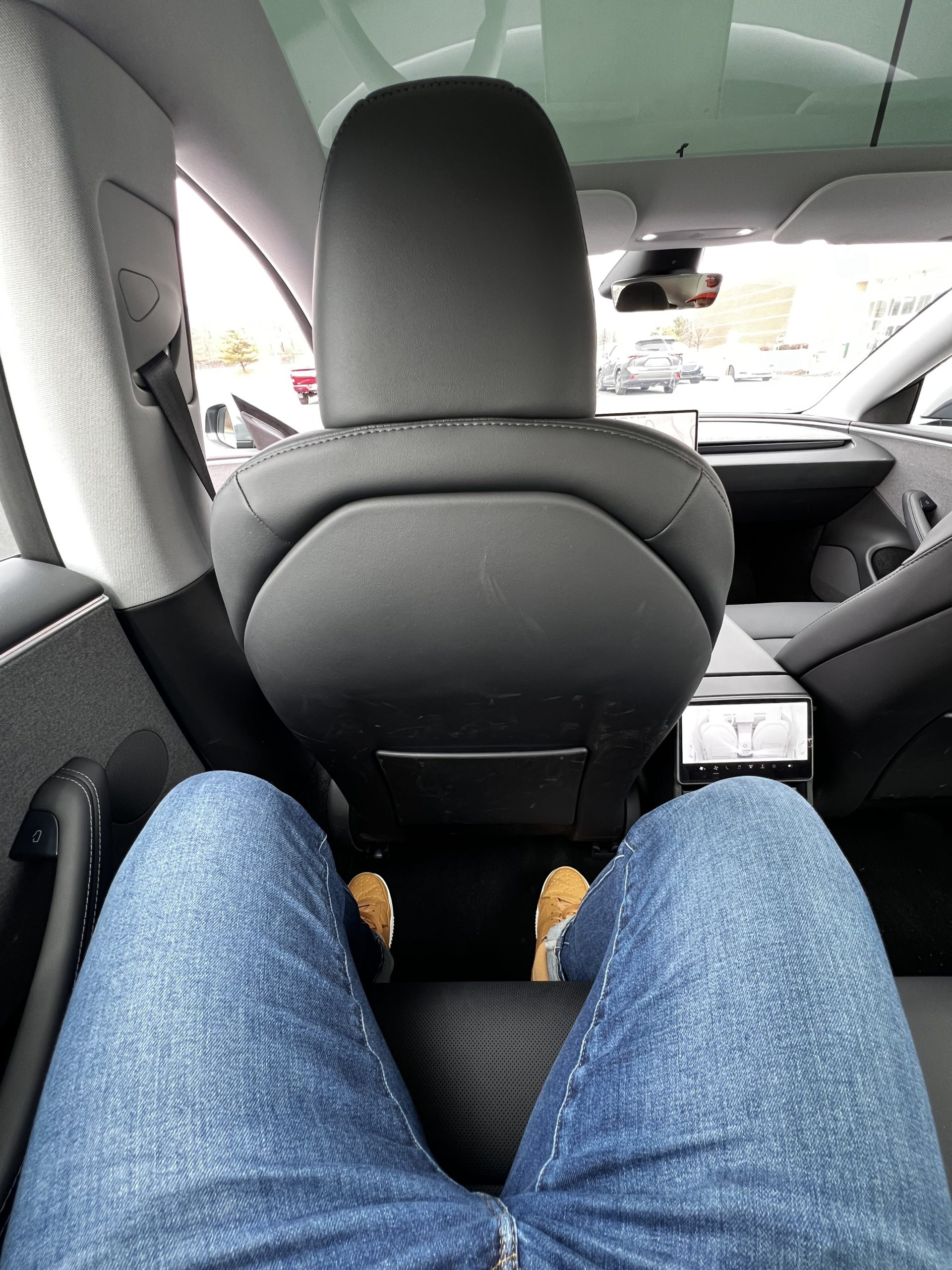
For a sedan, it’s pretty understandable to have limited space. You will be stuck in this generic position for most of the ride, but the back is definitely more suitable for children.
Rear Touchscreen
I think the rear touchscreen is a nice addition. A lot of cars have one now, and it is a good thing to have. It is packed with features to keep your rear occupants busy, but I feel that it is more of a novelty move than anything. It’s a decent size, can play some of the games in the Tesla Arcade, and streaming is available.
Trunk and Frunk
The frunk and power trunk are both spacious and provide room for a lot of things. I couldn’t get a good gauge on how much luggage you could fit in the trunk, but the frunk space would be nice for those daily trips to the grocery store to pick up odds and ends.
My biggest concern would be fitting a few golf bags in the trunk, and it seems like two or three would be the limit there.
Cabin Noise
Last week, I had to drive to Penn State to cover a wrestling match, and I went by myself. Spending 10-12 hours in front of a computer screen daily, constantly having to listen to things, living with a dog, and barely ever having peace and quiet prompted me to turn the stereo off and take the two-hour trip in silence. It was great.
One thing I truly love about this new Model 3 is the cabin noise. It was so quiet in the car and so peaceful, that it was undoubtedly my favorite part of the test drive. I never turned the music on once, I just chose to drive in the quiet, and I really liked how peaceful it was inside the cabin because road noise has been a huge complaint of some drivers in the past. I didn’t have that issue at all.
Closing Thoughts
Tesla did a good job of improving some of the parts of the Model 3 with this update. The sleek and sporty exterior look is great, the amount of noise in the cabin was excellent, and the suspension and ride comfort were top notch.
Were there things I wish were different? Yes. Absolutely. I wish stalks were still a thing, I wish changing climate control settings and other things that are commonly adjusted throughout the course of a drive were more easily accessible.
Do I think this is a mini Model S? It’s tough to say. Personally, the interior of this car makes me feel like I’m not getting much for the price. I didn’t feel blown away by the inside of the car from an aesthetic perspective. It just felt too minimalistic, and I’ve liked driving other Teslas more than this.
“Would I trade in my current car for this one?” is the question I ask myself when I have the opportunity to drive other vehicles. I did not get that impression from the Model 3. In fact, the Model X and Model Y are the only two cars I’d even remotely consider at this point from Tesla, but there are a few reasons for that.
- I prefer an SUV or something with more interior space than I truly need,
- I drive my car on the beach every year; I wouldn’t sacrifice that privilege for a sedan that doesn’t blow me away in every aspect,
- The minimalism truly is a major turn off for me. I liked the stalks, the display behind the steering wheel in the Model X and S, and more things to look at
Did Tesla improve this car? Yes. Was it the best EV I’ve ever driven? No. But it’s also the entry-level Tesla, and if you want more, you have to pay more, or settle for another car. It is unrealistic to expect this vehicle to check off all the boxes at this price. Is it a good car for a first-time/young driver? Absolutely. It is something I’d consider if I drove an hour to Baltimore or 45 minutes to Harrisburg for work. As someone who works from home and spends a limited amount of time behind the wheel, it would not be my first choice. But, it’s still a great car.
What did you think of my Model 3 review? Were there things I missed? Things you’d like to hear about further? Shoot me an email at joey@teslarati.com.

Elon Musk
Elon Musk and Tesla AI Director share insights after empty driver seat Robotaxi rides
The executives’ unoccupied tests hint at the rapid progress of Tesla’s unsupervised Robotaxi efforts.

Tesla CEO Elon Musk and AI Director Ashok Elluswamy celebrated Christmas Eve by sharing personal experiences with Robotaxi vehicles that had no safety monitor or occupant in the driver’s seat. Musk described the system’s “perfect driving” around Austin, while Elluswamy posted video from the back seat, calling it “an amazing experience.”
The executives’ unoccupied tests hint at the rapid progress of Tesla’s unsupervised Robotaxi efforts.
Elon and Ashok’s firsthand Robotaxi insights
Prior to Musk and the Tesla AI Director’s posts, sightings of unmanned Teslas navigating public roads were widely shared on social media. One such vehicle was spotted in Austin, Texas, which Elon Musk acknowleged by stating that “Testing is underway with no occupants in the car.”
Based on his Christmas Eve post, Musk seemed to have tested an unmanned Tesla himself. “A Tesla with no safety monitor in the car and me sitting in the passenger seat took me all around Austin on Sunday with perfect driving,” Musk wrote in his post.
Elluswamy responded with a 2-minute video showing himself in the rear of an unmanned Tesla. The video featured the vehicle’s empty front seats, as well as its smooth handling through real-world traffic. He captioned his video with the words, “It’s an amazing experience!”
Towards Unsupervised operations
During an xAI Hackathon earlier this month, Elon Musk mentioned that Tesla owed be removing Safety Monitors from its Robotaxis in Austin in just three weeks. “Unsupervised is pretty much solved at this point. So there will be Tesla Robotaxis operating in Austin with no one in them. Not even anyone in the passenger seat in about three weeks,” he said. Musk echoed similar estimates at the 2025 Annual Shareholder Meeting and the Q3 2025 earnings call.
Considering the insights that were posted Musk and Elluswamy, it does appear that Tesla is working hard towards operating its Robotaxis with no safety monitors. This is quite impressive considering that the service was launched just earlier this year.
Elon Musk
Starlink passes 9 million active customers just weeks after hitting 8 million
The milestone highlights the accelerating growth of Starlink, which has now been adding over 20,000 new users per day.

SpaceX’s Starlink satellite internet service has continued its rapid global expansion, surpassing 9 million active customers just weeks after crossing the 8 million mark.
The milestone highlights the accelerating growth of Starlink, which has now been adding over 20,000 new users per day.
9 million customers
In a post on X, SpaceX stated that Starlink now serves over 9 million active users across 155 countries, territories, and markets. The company reached 8 million customers in early November, meaning it added roughly 1 million subscribers in under seven weeks, or about 21,275 new users on average per day.
“Starlink is connecting more than 9M active customers with high-speed internet across 155 countries, territories, and many other markets,” Starlink wrote in a post on its official X account. SpaceX President Gwynne Shotwell also celebrated the milestone on X. “A huge thank you to all of our customers and congrats to the Starlink team for such an incredible product,” she wrote.
That growth rate reflects both rising demand for broadband in underserved regions and Starlink’s expanding satellite constellation, which now includes more than 9,000 low-Earth-orbit satellites designed to deliver high-speed, low-latency internet worldwide.
Starlink’s momentum
Starlink’s momentum has been building up. SpaceX reported 4.6 million Starlink customers in December 2024, followed by 7 million by August 2025, and 8 million customers in November. Independent data also suggests Starlink usage is rising sharply, with Cloudflare reporting that global web traffic from Starlink users more than doubled in 2025, as noted in an Insider report.
Starlink’s momentum is increasingly tied to SpaceX’s broader financial outlook. Elon Musk has said the satellite network is “by far” the company’s largest revenue driver, and reports suggest SpaceX may be positioning itself for an initial public offering as soon as next year, with valuations estimated as high as $1.5 trillion. Musk has also suggested in the past that Starlink could have its own IPO in the future.
News
NVIDIA Director of Robotics: Tesla FSD v14 is the first AI to pass the “Physical Turing Test”
After testing FSD v14, Fan stated that his experience with FSD felt magical at first, but it soon started to feel like a routine.

NVIDIA Director of Robotics Jim Fan has praised Tesla’s Full Self-Driving (Supervised) v14 as the first AI to pass what he described as a “Physical Turing Test.”
After testing FSD v14, Fan stated that his experience with FSD felt magical at first, but it soon started to feel like a routine. And just like smartphones today, removing it now would “actively hurt.”
Jim Fan’s hands-on FSD v14 impressions
Fan, a leading researcher in embodied AI who is currently solving Physical AI at NVIDIA and spearheading the company’s Project GR00T initiative, noted that he actually was late to the Tesla game. He was, however, one of the first to try out FSD v14.
“I was very late to own a Tesla but among the earliest to try out FSD v14. It’s perhaps the first time I experience an AI that passes the Physical Turing Test: after a long day at work, you press a button, lay back, and couldn’t tell if a neural net or a human drove you home,” Fan wrote in a post on X.
Fan added: “Despite knowing exactly how robot learning works, I still find it magical watching the steering wheel turn by itself. First it feels surreal, next it becomes routine. Then, like the smartphone, taking it away actively hurts. This is how humanity gets rewired and glued to god-like technologies.”
The Physical Turing Test
The original Turing Test was conceived by Alan Turing in 1950, and it was aimed at determining if a machine could exhibit behavior that is equivalent to or indistinguishable from a human. By focusing on text-based conversations, the original Turing Test set a high bar for natural language processing and machine learning.
This test has been passed by today’s large language models. However, the capability to converse in a humanlike manner is a completely different challenge from performing real-world problem-solving or physical interactions. Thus, Fan introduced the Physical Turing Test, which challenges AI systems to demonstrate intelligence through physical actions.
Based on Fan’s comments, Tesla has demonstrated these intelligent physical actions with FSD v14. Elon Musk agreed with the NVIDIA executive, stating in a post on X that with FSD v14, “you can sense the sentience maturing.” Musk also praised Tesla AI, calling it the best “real-world AI” today.
